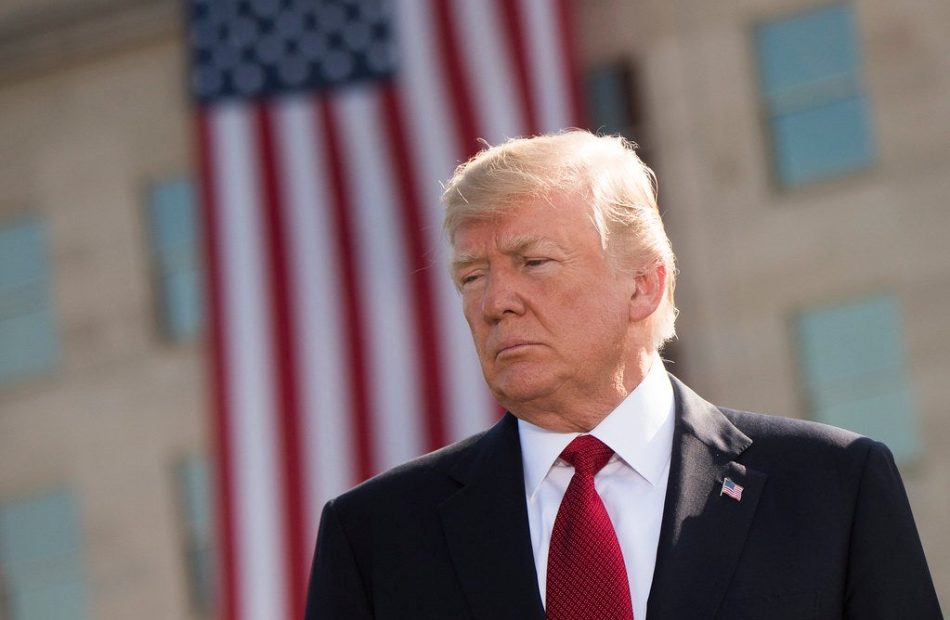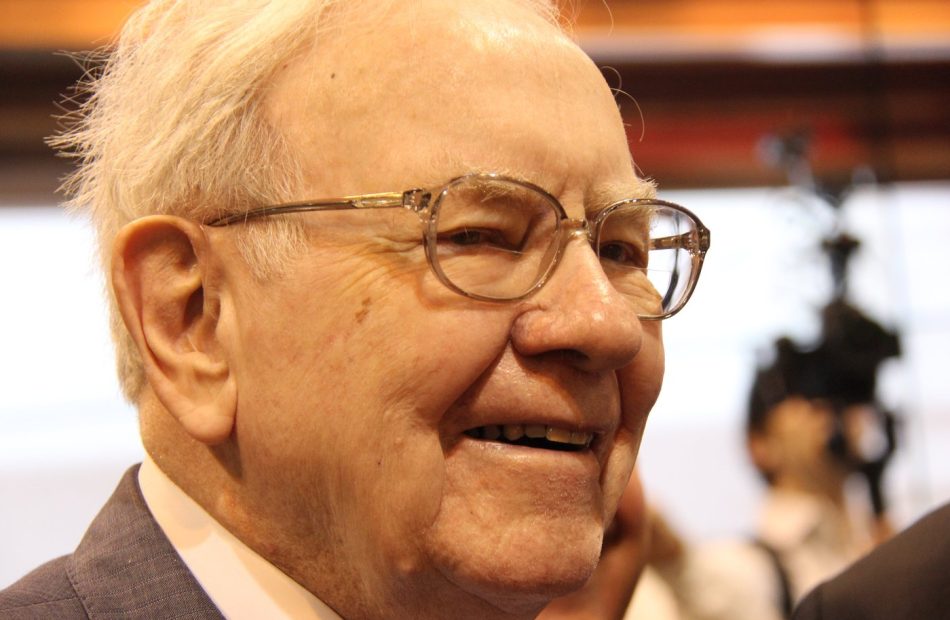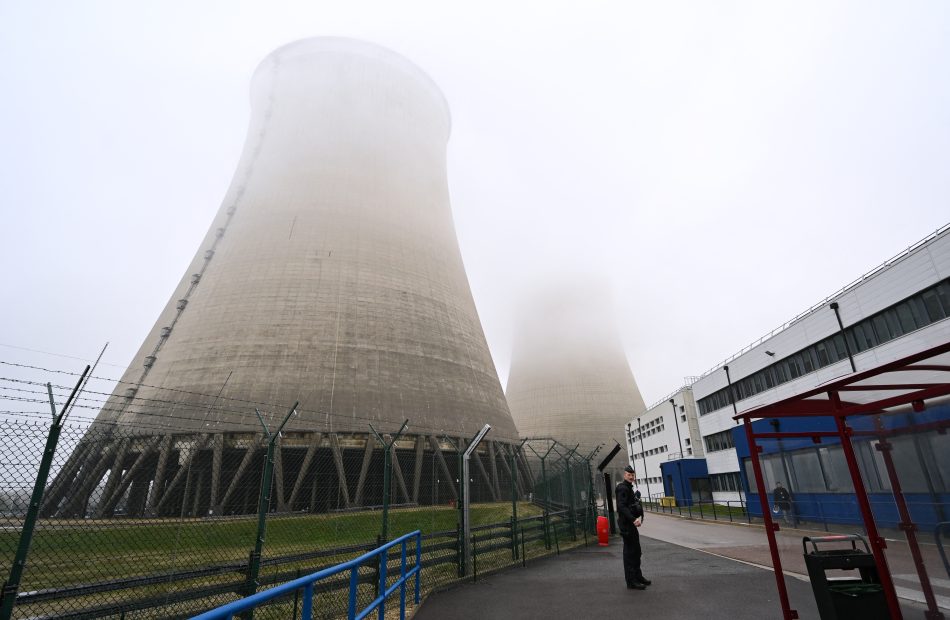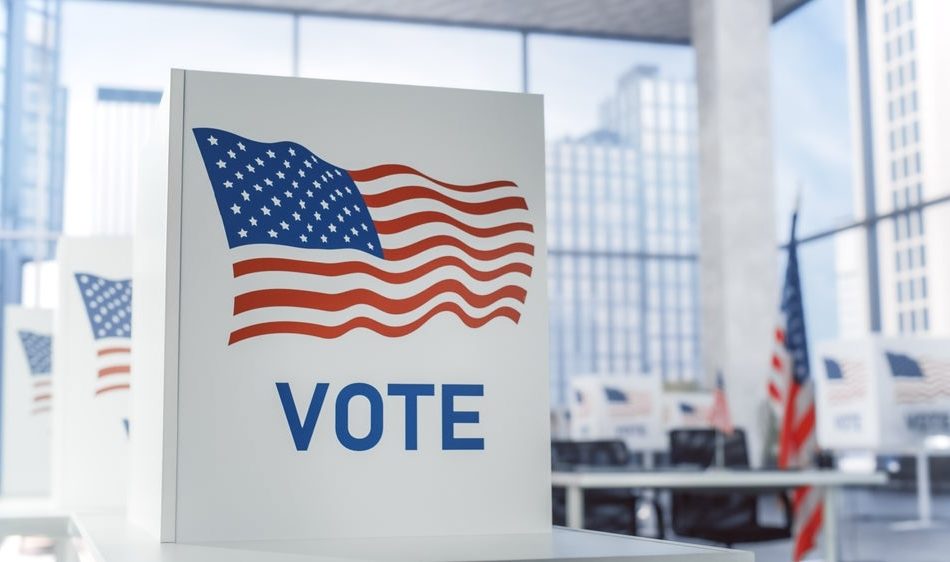Palantir Stock vs. Microsoft Stock: Wall Street Says Only 1 Will Head Higher From Here
Enterprises are spending heavily on artificial intelligence (AI)-powered software to drive automation and efficiency, and use data to make smarter and faster decisions. And that trend may be just getting started. The enterprise AI market could grow at an annual rate of 37.6% between 2025 and 2030, according to analysis from Grand View Research.
Two companies poised to see years of growth ahead in the enterprise-software space are Palantir Technologies (NYSE: PLTR) and Microsoft (NASDAQ: MSFT). Both companies have already seen the benefits of massive AI-related spending for their business and shareholders. Palantir stock is up 230% this year alone, as of this writing. Microsoft is up 77% since announcing an increased stake in generative AI leader OpenAI in early 2023.
Start Your Mornings Smarter! Wake up with Breakfast news in your inbox every market day. Sign Up For Free »
Despite the strong outlook for the industry, Wall Street analysts only expect one of these enterprise-software leaders to keep climbing higher over the next 12 months.
-
Palantir has a median-price target of $38 per share, based on the estimates of 22 analysts. That implies a downside of 30% from its share price, as of this writing.
-
Microsoft has a median-price target of $500 per share, based on the estimates of 57 analysts. That implies upside of 18% from its share price, as of this writing.
Here’s what investors need to know.
Palantir develops software to help government agencies and commercial clients use big data to find insights and create operational efficiencies. Its initial focus on government contracts allowed it to develop a framework that it could apply to big commercial-enterprise customers as well.
Palantir’s commercial-customer count is growing quickly, up 51% year over year. U.S. commercial revenue grew 54% year over year in the third quarter, fueling overall growth of 30%.
At the same time, its adjusted-operating margin expanded to 38% from 29% a year ago, as it leverages its growing scale. It’s blowing past the Rule of 40, which suggests it could have even more room to grow faster if it spent more on sales and marketing. But CEO Alex Karp would rather focus his attention on building a great product for a few select clients with deep pockets. He suggests that leads to better results in the long term.
Palantir offers two main software platforms, Gotham for government clients and Foundry for commercial clients. It introduced the Apollo platform in 2021 to ensure continuous operations for clients and allow them to run its software in virtually any environment.
DOJ Files Charges In Iranian Plot To Assassinate Trump
The Department of Justice (DOJ) has announced federal charges against three individuals linked to an alleged Iranian scheme to assassinate President-elect Donald Trump.
What Happened: The Justice Department disclosed on Friday that Farhad Shakeri, 51, was instructed by Iranian officials in September to conduct surveillance and ultimately assassinate Trump, as reported by CNN.
Shakeri, who remains at large in Iran, was allegedly directed by Iran’s Revolutionary Guard Corps (IRGC) to focus on Trump after initially being tasked with other assassination missions against U.S. and Israeli citizens.
See Also: Trump Media & Technology Group Stock Is Surging Wednesday: What’s Going On?
Prosecutors have accused Shakeri of engaging in recorded conversations with law enforcement and being given a seven-day deadline by IRGC officials on October 7 to devise an assassination plan.
Two other individuals, Carlisle Rivera and Jonathan Loadholt, were arrested in New York for allegedly aiding the Iranian government in surveilling a separate U.S. citizen of Iranian origin. Both appeared in court on Thursday and are detained pending trial.
Attorney General Merrick Garland and FBI Director Christopher Wray have condemned the threats from Iran, highlighting the serious national security risk posed by the Iranian regime.
Why It Matters: The revelation of this plot comes amid heightened tensions between the U.S. and Iran.
Earlier this year, U.S. intelligence agencies disclosed that Iran attempted to share hacked information from Trump’s campaign with President Biden’s team, though no response from the Biden campaign was found.
This incident, reported in September, underscores Iran’s ongoing cyber and physical threats against U.S. interests.
Additionally, Trump himself has publicly acknowledged threats to his life from Iran, expressing gratitude for increased Secret Service protection.
These developments highlight the persistent and multifaceted threats posed by Iran, necessitating vigilance and robust security measures by U.S. authorities.
Read Next:
Disclaimer: This content was partially produced with the help of AI tools and was reviewed and published by Benzinga editors.
Photo courtesy: Flickr
Market News and Data brought to you by Benzinga APIs
© 2024 Benzinga.com. Benzinga does not provide investment advice. All rights reserved.
Annual Shareholder Meeting
Houston, Nov. 8, 2024 /PRNewswire/ — The Executive Committee of the Board of Directors of Silver Star Properties REIT, Inc. (“Silver Star” or the “Company”), a self-managed real estate investment trust currently repositioning into the self-storage asset class, intends to, present to the Board of Directors, a request to call an annual meeting of stockholders as required under the bylaws of the Company in the month of August, 2025. All stockholders will be notified in satisfaction of the requirements of the bylaws and Maryland statutory provisions.
![]() View original content:https://www.prnewswire.com/news-releases/annual-shareholder-meeting-302300488.html
View original content:https://www.prnewswire.com/news-releases/annual-shareholder-meeting-302300488.html
SOURCE Silver Star Properties REIT
Market News and Data brought to you by Benzinga APIs
© 2024 Benzinga.com. Benzinga does not provide investment advice. All rights reserved.
Crypto Analyst Sees Bitcoin Hitting $80,000 This Month
Cryptocurrency trader and expert Michaël van de Poppe has projected that Bitcoin BTC/USD could potentially hit the $80,000 mark this month, following a possible retest at the $71,679 level.
What Happened: Van de Poppe made his forecast on social media platform X. He anticipates that Bitcoin might undergo a minor correction before climbing over 5% from its current price.
“Bitcoin is consolidating around a new ATH. I do believe we’ll continue, but probably have a slight correction first – dips ready to be bought. Next? $80,000 in November,” he said in the post.
The trader attributes this potential surge to substantial inflows into Bitcoin exchange-traded funds (ETFs) in the aftermath of the victory of pro-crypto candidate Donald Trump.
Also Read: Analyst Says This Crypto Could Explode By Up To 3.765%, And It Is Not Bitcoin Or Solana
In another post on X he said, “Record-breaking inflow in Bitcoin since Trump won the elections. More than $2 Billion has flown into the Bitcoin ETF. More than $120 million has flown into the Ethereum ETF. The bull market is here.”
At the time of reporting, Bitcoin was trading at $75,966, marking an increase of over 11% since its Election Day low of $68,206.
Van de Poppe also expressed long-term bullish sentiments for Ethereum ETH/USD, suggesting it will continue to rally higher with retests of lower price levels. Ethereum is currently trading at $2,920, up more than 21% from its Election Day low of $2,403.
Why It Matters: The prediction by van de Poppe is significant as it comes at a time when Bitcoin is experiencing a resurgence following the US presidential election.
The victory of pro-crypto candidate Trump has led to an influx of investments into Bitcoin ETFs, indicating a bullish market. Furthermore, the trader’s positive outlook for Ethereum suggests a broader upward trend in the cryptocurrency market.
Read Next
Michaël Van De Poppe Predicts Massive Bitcoin Surge, Says Price May Soar By 890%
Market News and Data brought to you by Benzinga APIs
© 2024 Benzinga.com. Benzinga does not provide investment advice. All rights reserved.
Abortion Pill Orders Spike Hard Following Election As Women Brace for Potential Restrictions
Anti-abortion advocates are gearing up for a concerted push to roll back abortion access under Donald Trump’s second presidency.
With the Biden administration easing abortion access through telehealth and emergency abortion guidelines, these groups see the next phase of their campaign as dismantling policies they deem “pro-abortion,” AP News reports.
Telehealth company Wisp experienced a dramatic surge in abortion pill orders, with a 600% increase between Election Day and the following day, as women seem concerned.
In states like Florida and Texas, where abortion pills cannot be legally shipped, orders for “morning after” pills surged nearly 1000%, AP News added.
This spike reflects growing uneasiness about access to reproductive healthcare following the election.
Reversing Biden’s Emergency Abortion Guidelines
One of the key targets for anti-abortion groups is Biden’s directive requiring hospitals to provide emergency abortions when a woman’s life or health is at risk, AP News reports.
The guidance, aimed at ensuring access to abortion in states with restrictive laws, has faced legal challenges in places like Texas and Idaho.
Also Read: Trump Stumbles Again Over Health Care Issues Involving Abortion And Obamacare
Trump is expected to revoke this directive, which some hospitals have relied on to navigate restrictive state laws, especially in high-risk cases like ectopic pregnancies. Legal experts warn that, if reversed, this could further endanger women’s health in states with strict abortion bans.
Impact on Abortion Pills and Telehealth Access
Another area of concern for abortion rights advocates is the ease with which women can access abortion pills.
During the COVID-19 pandemic, the FDA relaxed regulations, allowing women to obtain abortion pills like mifepristone through telehealth consultations. Anti-abortion groups argue that these pills are unsafe and should require in-person medical supervision.
With the Supreme Court maintaining access to the drug, conservative states have continued to challenge its distribution. A potential Trump administration could take steps to restrict access to abortion pills, further complicating abortion access across the country.
As women’s abortion pill orders surged following the 2024 election, it’s clear that access to reproductive healthcare remains a volatile issue. Trump’s actions on abortion will likely shape the landscape for years to come, with advocates on both sides preparing for a protracted legal and political battle.
Read Next:
Photo: Shutterstock
Market News and Data brought to you by Benzinga APIs
© 2024 Benzinga.com. Benzinga does not provide investment advice. All rights reserved.
Warren Buffett Invested $99 Billion of His Portfolio in 2 Stocks That Could Rise 19% and 20%, According to a Couple of Wall Street Analysts
Warren Buffett took the helm at Berkshire Hathaway in 1965. Since then, shares of the holding company have soared by about 4,631,475%, making him perhaps the most well-regarded investor of his time.
Buffett knows as well as anyone that the price you pay for a stock is a big factor determining the return it will eventually provide. If you’d like to see your portfolio perform the way Buffett’s has, purchasing shares of quality businesses while their stock prices are depressed should be a big part of your strategy.
Start Your Mornings Smarter! Wake up with Breakfast news in your inbox every market day. Sign Up For Free »
The benchmark S&P 500 (SNPINDEX: ^GSPC) index has risen by about 36% over the past 12 months, and it looks like Buffett expects continued gains from at least a couple of its components. At the end of September, $98.6 billion of the holding company’s portfolio was invested in two S&P 500 stocks that have lagged the benchmark index, Apple (NASDAQ: AAPL) and Coca-Cola (NYSE: KO).
Both of these stocks have been trading well below the expectations of Wall Street analysts who follow them closely. Here’s a look at why they’re expected to outperform to see if they deserve a place in your portfolio too.
Berkshire Hathaway has been trimming its Apple stake, but it is still the equity portfolio’s largest holding. The holding company valued its Apple stake at $69.9 billion at the end of September, down from $174.3 billion at the end of 2023.
Apple stock underperformed the S&P 500 index by rising just 25% during the 12 months ended Nov. 8, 2024. Gains have been subdued because it’s been a long time since the iPhone maker launched a new product that can drive sales growth. Trailing-12-month revenue contracted by 0.8% since late 2022.
Apple’s lack of growth is concerning but not for Morgan Stanley analyst Erik Woodring, who thinks the stock can climb much higher. He recently reiterated a $273 price target that implies a gain of about 20% from recent prices.
Whether it was iPhones, Macs, or accessories, sales of every product category were lower in fiscal 2024, which ended on Sept. 30, than they were in 2022. Wall Street isn’t turning its back on the stock because service sales are way up. Over the same 2-year period, revenue from the App Store, streaming, and cloud services grew by 23% to $96.2 billion.
Equipment sales can fluctuate with economic downturns and new product cycles. Recurring-service revenue is often more predictable and nearly always more lucrative. A revenue mix shifting toward services improved gross-profit margin in fiscal 2024 to 46.2% from 43.3% in 2022.
YouTube Premium's Legacy Prices Come To An End More Users
In a move affecting users globally, Alphabet Inc. GOOG GOOGL subsidiary Google’s YouTube has announced price increases for its Premium and Music services, impacting legacy subscribers in the U.S. and Europe.
What Happened: This adjustment will see U.S. subscribers with older plans, such as those from Google Play Music or YouTube Red, transitioning to a $13.99 monthly rate in the new year.
European users have also been notified of similar changes, with some receiving a three-month grace period at their current rates, according to a report by The Verge.
Paul Pennington, YouTube’s communications manager, confirmed the price adjustments will affect both new and existing subscribers in countries such as Bulgaria, Costa Rica, and Spain.
Subscribers who initially joined through Google Play with early adopter pricing will receive three extra months at their existing rate.
A Reddit post highlighted a legacy subscriber in Spain, whose monthly fee will rise from 7.99 euros to 10.99 euros, still below the 12.99 euros rate for new individual music subscribers.
See Also: Google Gemini Rolls Out ‘Utilities’ Extension For Android: Here’s What All You Can Do With It
Why It Matters: The price hike comes amidst YouTube’s strategic expansion and revenue growth. In October, YouTube extended its “Premium Lite” plan to more countries, offering a cheaper subscription with fewer ads. This move provides an alternative for users seeking fewer ads without additional perks.
Earlier in May, YouTube introduced the AI-powered “Jump Ahead” feature for Premium users, allowing them to skip commonly skipped sections of videos, enhancing user experience.
Furthermore, YouTube’s financial success was highlighted in October when it reported generating $50 billion in combined advertising and subscription revenue over the past year.
Check out more of Benzinga’s Consumer Tech coverage by following this link.
Read Next:
Disclaimer: This content was partially produced with the help of AI tools and was reviewed and published by Benzinga editors.
Photo courtesy: Shutterstock
Market News and Data brought to you by Benzinga APIs
© 2024 Benzinga.com. Benzinga does not provide investment advice. All rights reserved.
New Report Finds Striking Similarities Between Today's Housing Market And 2007 – Is Another Crash Around The Corner?
Recent analyses suggest today’s U.S. housing market holds similarities to 2007’s precrash conditions but key differences reveal it’s not just history repeating itself. Housing prices have surged in major cities due to tight inventory, land scarcity and rising construction costs but not risky lending practices.
In states like Idaho, single-family home prices jumped by 19%, fueled by pandemic-era relocations and increased demand. The National Association of homebuilders (NAHB) notes this isn’t a case of overborrowing but of market forces like material costs and a severe shortage of affordable homes.
Don’t Miss:
Interest rates, too, present a major shift. While the 2007 crisis was partly triggered by historically low rates encouraging risky borrowing, today’s rates have reached multi-decade highs, averaging around 7%. High rates, intended to counteract inflation, have put a damper on demand, making mortgages pricier and keeping some potential buyers on the sidelines.
Unlike in 2007, where rates eventually led to a domino effect of defaults and price declines, today’s price reductions are minimal. Buyers are either priced out or waiting out hoping for rates to ease, with affordability at its lowest point in recent memory.
Trending: During market downturns, investors are learning that unlike equities, these high-yield real estate notes that pay 7.5% – 9% are protected by resilient assets, buffering against losses.
Strict lending standards also set today’s market apart from 2007’s. Fewer subprime loans are in play and most buyers are high-quality borrowers with safer, more traditional mortgages. According to Mark Zandi, chief economist at Moody’s Analytics, the current market foundation is “far more solid” than it was back then.
The speculative practices and unqualified loans that fueled the last housing bubble are missing today, keeping the housing market stable despite higher prices and inventory challenges. The inventory shortage further distinguishes today’s market. Inventory levels have plummeted nearly 60% since early 2020, a stark contrast to 2007’s oversupply contributing to plunging prices.
Homes are so scarce in metropolitan areas that prices have increased even further. This supply strain isn’t easily fixed and while it props up home values it exacerbates affordability problems, particularly for renters spending more on housing costs than ever.
On the flip side, some signs echo 2007. The National Association of Realtors reported that in 2024 new homes made up about 13% of sales, with pre-owned homes at 87% – numbers nearly identical to the 2007 breakdown.
Trending: Commercial real estate has historically outperformed the stock market, and this platform allows individuals to invest in commercial real estate with as little as $5,000 offering a 12% target yield with a bonus 1% return boost today!
However, experts urge caution before drawing too many parallels. Alex Beene, a financial literacy instructor at the University of Tennessee at Martin, told Newsweek that today’s housing market isn’t simply teetering on the same edge as 2007.
“Before anyone raises the red flag, it’s important to note that getting a mortgage is far more comprehensive now. Today’s market is shaped more by high rates and prices than by unchecked borrowing,” he argued.
Builders, in particular, are taking steps to attract buyers with aggressive incentives. As reported by Newsweek, Ian Chang, a title and escrow expert, noted that some builders have sweetened the deal with rate buy-downs and home upgrades to offset high rates and lure buyers.
“Some buyers have seen new builds as attractive due to the promotions that builders have put in place,” said Chang. With traditional home sellers clinging to their low mortgage rates, new builds with incentives are taking a larger slice of the market share.
Read Next:
Market News and Data brought to you by Benzinga APIs
© 2024 Benzinga.com. Benzinga does not provide investment advice. All rights reserved.
What’s next for nuclear stocks after regulatory pushback?
Nuclear energy stocks have become a favorite of Wall Street this year as the artificial intelligence boom spreads and Big Tech searches for ways to meet its growing power demand.
They helped power the S&P 500’s Utilities index (XLU) to all-time highs — the index is on track to outperform the S&P 500’s equal-weighted counterpart (^SPXEW) in 7 of the past 10 months, according to data compiled by Bloomberg. And Vistra (VST), a nuclear power company, recently surpassed Nvidia (NVDA) as the biggest gainer in the S&P 500 (^GSPC) year to date.
Big Tech firms, including Amazon (AMZN), Microsoft (MSFT), and Google (GOOG), drove the gains, announcing hundreds of millions of dollars in investments in nuclear power names over the course of several weeks.
It’s a story the market ran with. Then came a regulatory wrist slap that briefly stopped the nuclear energy rally in its tracks.
In a 2-to-1 ruling on Nov. 1, the Federal Energy Regulatory Commission (FERC) rejected a request from Talen Energy (TLN) to increase the power it could provide Amazon from its Susquehanna power plant, citing concerns about grid reliability and energy affordability.
Several nuclear energy stocks, including Talen, Oklo (OKLO), Centrus Energy (LEU), Vistra (VST), and NuScale Power (SMR), tumbled the following Monday.
Amazon is expected to petition the decision, according to CFRA analyst Daniel Rich. But for investors, “it certainly is a setback,” Rich said.
Rich explained that co-location agreements have become a major focus for the tech industry, as they allow hyperscalers to buy power directly from an existing energy source for their data centers. This enables them to build more data centers at speed and at lower costs.
But these agreements may be a sticking point for regulators, which is why Big Tech has pursued other strategies, such as creating new sources of nuclear energy through small modular reactors (SMRs).
Though there are currently no SMRs in the United States, companies like Amazon see them as a way to affordably add to the power grid while also meeting the increased energy demands AI requires.
“The order may not represent a long-term risk,” ClearView Energy Partners managing director Timothy Fox told Yahoo Finance. “It’s more that FERC may have punted or didn’t want to set a precedent about co-location until it had firm policy.”
Clay Sell, the CEO of nuclear reactor designer X-energy, told Yahoo Finance that “a significant portion of the increased electricity demand in the US for the next 25 years is going to come from AI.”
Robinhood CEO Says Rising Interest In Election Prediction Markets Is Indicative Of Growing 'Distrust Of Traditional News'
Robinhood Markets HOOD new election prediction market is reshaping how people consume information, with CEO Vlad Tenev saying it could redefine how users get real-time news.
What Happened: Robinhood’s prediction market was unveiled a week before the election, spotlighting the race between Democratic nominee Kamala Harris and now President-elect Donald Trump.
The platform’s CEO, Vlad Tenev, now envisions a future where Robinhood’s millions of users can place bets on a range of events, including the performance of stocks they trade on the platform, reported The Verge.
In an interview with the publication, Tenev suggested that the burgeoning interest in prediction markets is indicative of a growing “distrust of traditional news” and a shift in the way people seek information.
See Also: What Does Trump’s Victory Mean For EV Giant Tesla And The Big 3 Automakers?
He stated, “It’s the fastest way to get information about what’s happening,” adding that prediction markets delivered clear results hours before news networks announced the election.
The CEO also touched upon the legalization of election betting in the U.S., which he believes presents a “once-in-a-lifetime opportunity to create a new innovative product and offer it to customers.”
He is optimistic about the future of prediction markets and sees Robinhood leaning into them more.
Tenev also shared his thoughts on the potential of prediction markets in financial markets, sports betting, and beyond. He believes these markets could offer a more accurate method of hedging risk or speculating on company performance.
Why It Matters: Robinhood’s prediction market has seen significant activity since its launch. The platform’s election contracts surpassed 200 million trades on Election Day itself.
This rapid growth continued, with Robinhood witnessing a record overnight trading volume, with 400 million 2024 election contracts traded.
Last month, Robinhood Markets posted quarterly earnings of 17 cents per share, aligning with analyst expectations.
Revenue for the quarter reached $637 million, slightly below the forecasted $650.67 million but marking a 36.4% increase from $467 million in the same quarter last year.
Price Action: Block’s shares closed Friday up 4.02% at $30.54. In after-hours trading, the stock saw further gains, reaching $30.60 as of this writing, according to Benzinga Pro
Read Next:
Disclaimer: This content was partially produced with the help of Benzinga Neuro and was reviewed and published by Benzinga editors.
Photo courtesy: Shutterstock
Market News and Data brought to you by Benzinga APIs
© 2024 Benzinga.com. Benzinga does not provide investment advice. All rights reserved.









